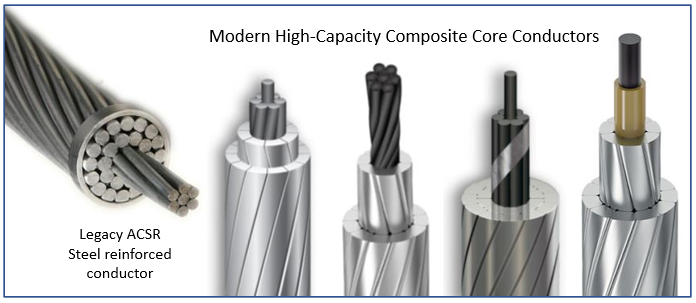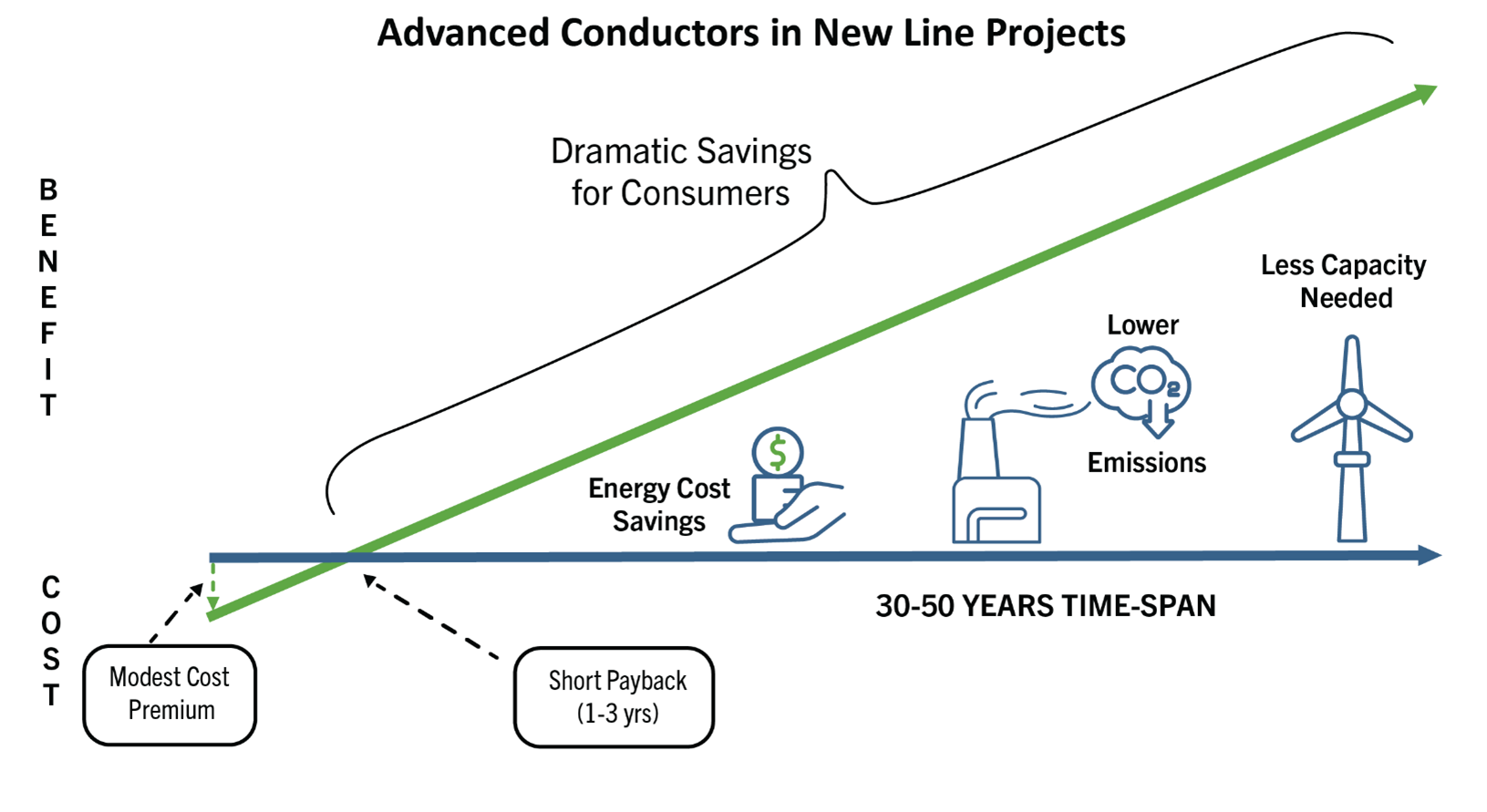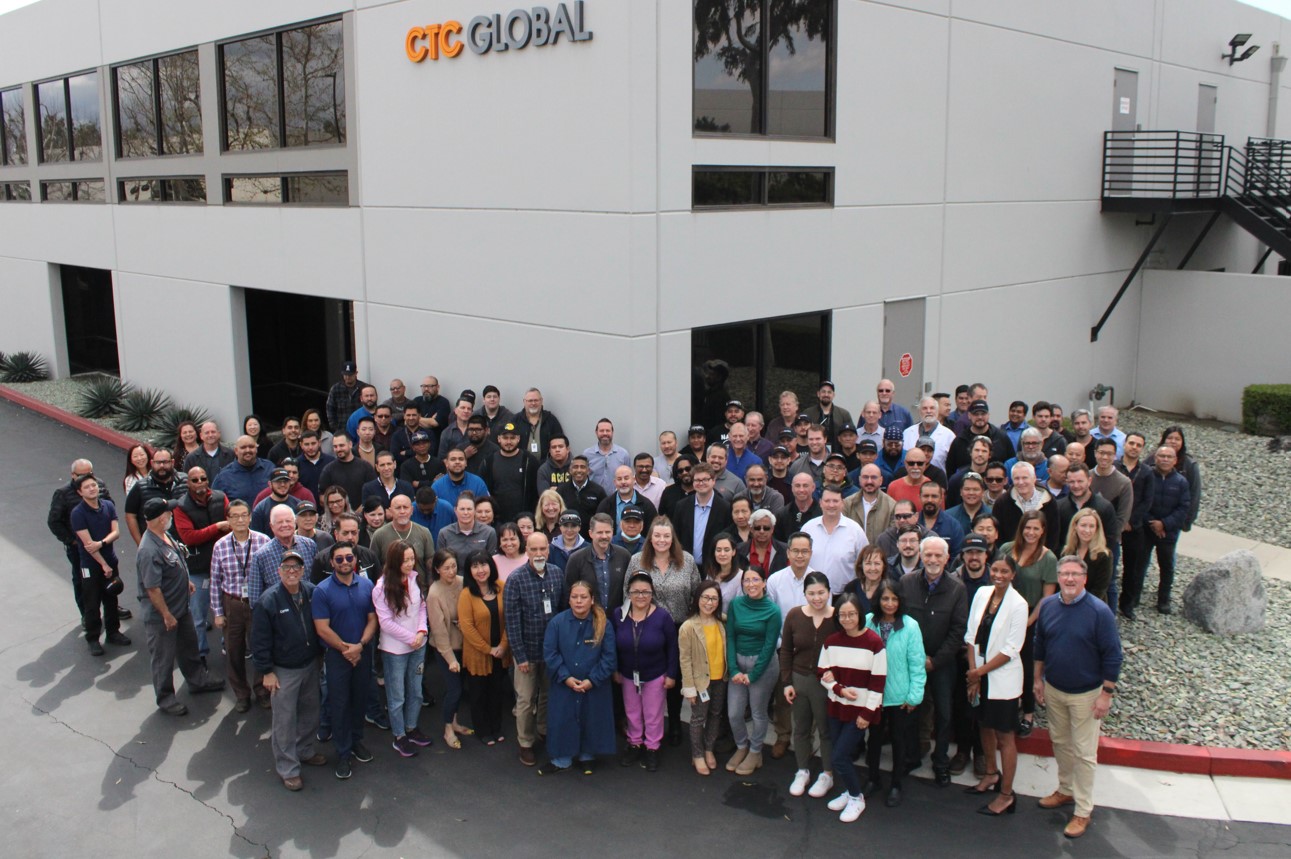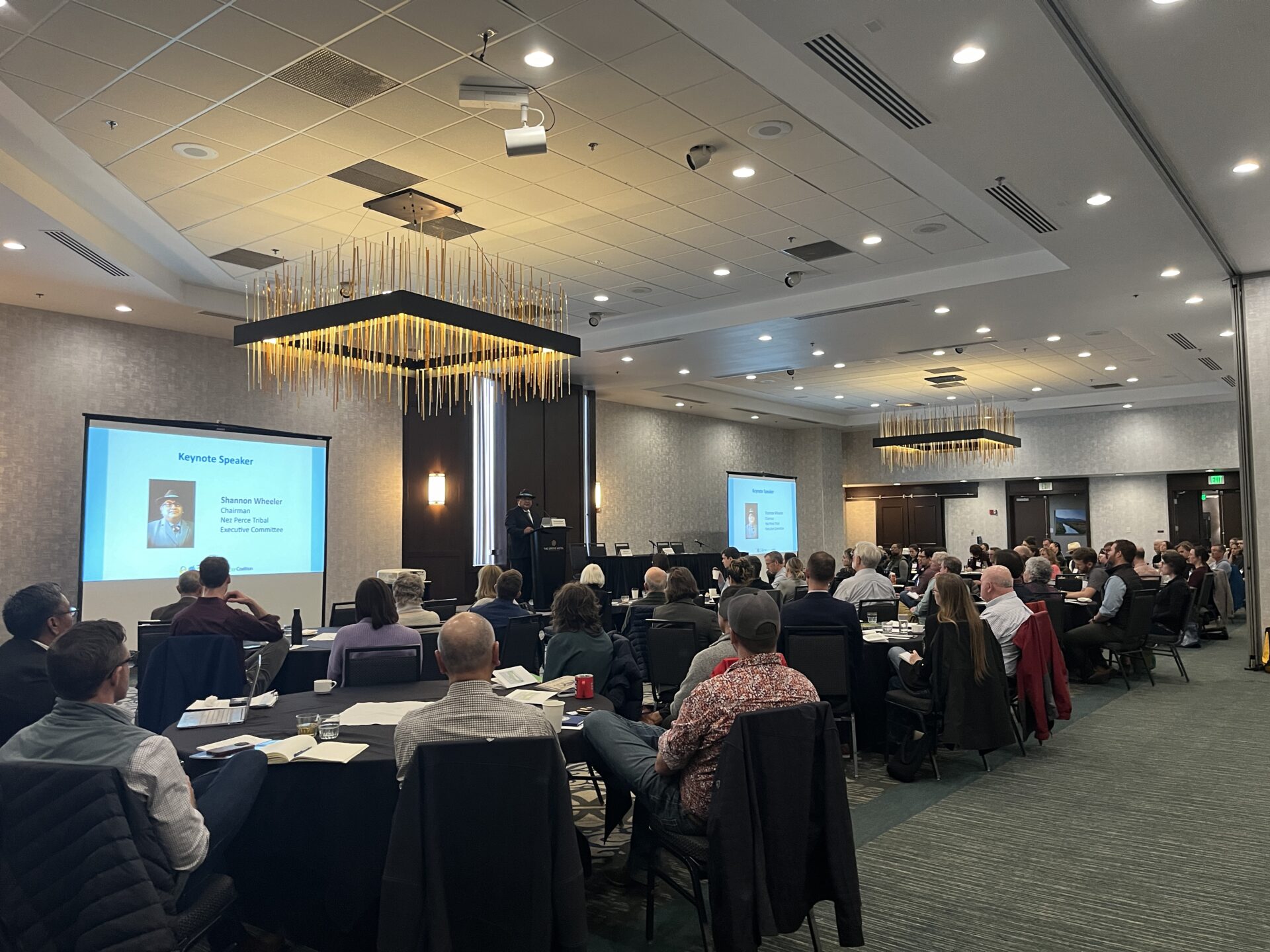In an analysis entitled NET-ZERO AMERICA[1], Princeton University concluded that $1.1 trillion needs to be invested in the U.S. transmission grid through 2040 to reduce carbon emissions to zero by 2050.[2] Recognizing the urgency, the recently enacted Infrastructure Investment and Jobs Act invests about $16.5 billion in electric grid resiliency and flexibility upgrades and new transmission lines. As the Department of Energy begins to make these substantial investments, it is critical that the Department seize the opportunity to prioritize the installation of modern, high performance Advanced Conductors rather than inefficient legacy lines. To do otherwise would be shameful and would miss a significant opportunity to lower electric consumer’s bills and rapidly deploy clean energy generation.
What is an Advanced Conductor?
An Advanced Conductor is an electric conductor that uses a modern composite core (instead of steel wires) and shaped, low resistance aluminum wire. This combination of lightweight, super-strong, engineered core with higher efficiency aluminum means an Advanced Conductor, when compared to a legacy conductor of the same size, will carry twice the power capacity, lose up to 40% less energy when delivering electricity from point A to point B, and sag far less than the legacy conductor (minimizing ground clearance, fire, and safety concerns).

Advanced Conductor technology creates a unique opportunity: reconductoring on existing structures.
This improved Advanced Conductor design presents a special opportunity: replace the legacy conductor (a hundred-year-old technology) with an Advanced Conductor on an existing transmission structure to substantially upgrade the existing powerline. This wire-for-wire exchange on the existing structure, called reconductoring, can be performed quickly and does not require lengthy and expensive construction and permitting timelines. Doing so accelerates electric grid decarbonization and modernization by rapidly deploying additional transmission capacity, lowering power line losses, and reducing consumers’ electricity bills.
Advanced Conductors should also be used for new transmission.
In addition to reconductoring existing transmission, Advanced Conductors should be deployed when new grid is needed. This is especially the case when renewable power (like solar and wind) generated in remote areas needs to be transmitted to urban load centers. Deploying modern Advanced Conductors for this new grid capacity enhances the performance, flexibility, and reliability of the overall transmission system.
Advanced Conductors cost more but provide much greater benefits.
For new transmission lines, Advanced Conductors carry a modest installation cost premium over legacy conductors (perhaps 5-10% more of the total project cost). However, that premium is paid back to consumers within one-to-three years, and the long-term, enduring efficiency and capacity benefits of deploying Advanced Conductors are enormous. See the graph below for an illustration.
For reconductoring projects, there is no cost premium because legacy conductors simply cannot accomplish the 2X capacity increase provided by Advanced Conductors while using the existing structures. And in both new line and reconductoring cases, the value of energy savings and the resulting avoided emissions are huge!
Reconductoring with Advanced Conductor enables rapid and substantial carbon reduction.
The economic and environmental benefits of Advanced Conductors were validated in a March 2022 Grid Strategies LLC (G.S.) report examining the role of Advanced Conductors in accelerating grid decarbonization.[3] In one analysis, G.S. examined the amount of transmission power lines in the North American Electric Reliability Council (NERC) that would be over 60 years old during the next decade. They estimated >200,000 miles of transmission lines met that criterion. G.S. then hypothesized: What if only 25% of these “old” power lines were reconductored with Advanced Conductors over the next decade? The magnitude of the result is noteworthy. During the next decade, this reconductoring with Advanced Conductor initiative:
- Creates grid capacity to interconnect 270,000 MW of renewable generation (27 GW/yr);
- Enables 3.5 billion MWh of renewable energy to be distributed around the grid;
- Reduces CO2 emissions by nearly 2.4 billion metric tons (equivalent to running forty 800 MW 85% CF (base-loaded) U.S. coal plants for 10 year)[4]; and
- Reduces consumer electric bills by at least $140 billion.[5]
Advanced Conductors should be widely used to create a modern, net-zero electric grid.
The Princeton NET-ZERO AMERICA report estimated costs based on the historical cost and performance of conventional power line construction with legacy power line conductors. Widespread Advanced Conductor use in any of the Princeton scenarios should lower the total costs to the consumer and increase the carbon reduction versus using the old technology. It’s past time to modernize the electric grid with modern technology: Advanced Conductors.
READ HERE to view PDF version of this document.
[1] Net-Zero America: Potential Pathways, Infrastructure, and Impacts, Final Report, October 29, 2021, Princeton University, https://netzeroamerica.princeton.edu .
[2] IBID, page 66.
[3] Jay Caspary and Jessie Schneider, ADVANCED CONDUCTORS ON EXISTING TRANSMISSION CORRIDORS TO ACCELERATE LOW COST DECARBONIZATION, March 2022, Grid Strategies LLC, https://gridprogress.files.wordpress.com/2022/03/advanced-conductors-on-existing-transmission-corridors-to-accelerate-low-cost-decarbonization.pdf
[4] Carbon Dioxide from coal plant: 2.23 #/kWh (1.0115 mT/MWh) in U.S. 2020: https://www.eia.gov/tools/faqs/faq.php?id=74&t=11
[5] Grid Strategies LLC Report, Ibid, page 20.







